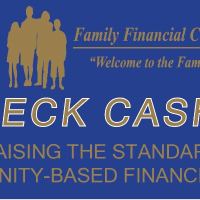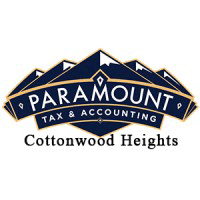Not sure if ACFN is right for you?
Talk to a Franchise Advisor who can match you with your perfect franchise based on your goals, experience, and investment range.
Talk to an Expert
Acfn
How much does Acfn cost?
Initial Investment Range
$37,838 to $59,921
Franchise Fee
$30,688 to $40,271
ACFN businesses are part of the ACFN automated teller machine (“ATM”) network and provide ATM services, financial transaction processing services, and related financial services, and ancillary goods to businesses and individuals.
Enjoy our partial free risk analysis below
Unlock the full risk analysis to access 9 more categories covering 100+ risks.
Acfn December 30, 2024 FDD Risk Analysis
Free FDD Library AI Analysis Date: July 16, 2025
DISCLAIMER: Not Legal Advice - For Informational Purposes Only. Consult With Qualified Franchise Professionals.
Franchisor Stability Risks
Start HereDisclosure of Franchisor's Financial Instability
High Risk
Explanation
The franchisor explicitly warns that its financial condition “calls into question [its] financial ability to provide services and support to you.” The audited financial statements in Exhibit B confirm this, showing a significant stockholders' deficit (negative net worth) of over $1.1 million and negative working capital. This indicates a precarious financial position, which could impact its ability to support your business. State regulators in California have required the franchisor to maintain a surety bond due to inadequate capitalization.
Potential Mitigations
- Your accountant must thoroughly review the franchisor's audited financial statements, including all footnotes and the explicit 'Special Risk' warning.
- A business advisor can help you assess if the franchisor has sufficient cash flow and resources to fulfill its support obligations despite its poor balance sheet.
- Consulting a franchise attorney is crucial to understand the protections offered by the state-mandated surety bond.
High Franchisee Turnover
Medium Risk
Explanation
Item 20 data for the most recent year shows that 12 franchisees ceased operations for reasons other than termination or non-renewal. The franchisor's footnotes indicate these 12 outlets were transferred to new owners. While this suggests franchisees are selling rather than failing, the reasons for selling are unknown and could relate to profitability or other systemic issues. This represents an annual turnover rate of over 5% of the system, which warrants further investigation.
Potential Mitigations
- It is critical to contact a significant number of former franchisees listed in Item 20 to understand why they left the system.
- Your accountant should help you analyze the turnover data over the past three years to identify any concerning trends.
- A franchise attorney can help you frame questions for former franchisees to assess their experience and profitability.
Rapid System Growth
Low Risk
Explanation
The franchise system has experienced slow and steady growth in the number of franchisees over the last three years, as shown in Item 20. This does not suggest the system is expanding too rapidly for its support infrastructure to handle. However, the franchisor's weak financial condition, as disclosed in Item 21, could present challenges in providing adequate support even with slow growth.
Potential Mitigations
- Your business advisor can help you evaluate if the franchisor’s support systems are adequate for the current system size.
- Engage with a range of existing franchisees to inquire about the quality and responsiveness of the support they currently receive.
- An accountant should review the financials in Item 21 to determine if the franchisor has the resources to sustain its support obligations.
New/Unproven Franchise System
Low Risk
Explanation
This risk was not identified. The franchisor, ACFN Franchised Inc. (ACFN), has been operating and offering franchises since 2003, and its key executives have been with the company since its inception. This indicates an established system with experienced management. An unproven system can be risky due to untested business models and a lack of established brand recognition, but that does not appear to be the case here.
Potential Mitigations
- A business advisor can help you research the franchisor's history and its position within the ATM services industry.
- You should still review the franchisor's financials with an accountant to assess its long-term stability.
- Speaking with long-term franchisees can provide insight into the system's evolution and management's effectiveness over time.
Possible Fad Business
Low Risk
Explanation
This risk was not identified. The business model, providing ATM services, is a well-established industry and not based on a recent trend. A fad-based business carries the risk that consumer interest could decline rapidly, potentially harming your investment long after you are contractually committed. While the ATM industry faces evolution, it is not considered a short-term fad.
Potential Mitigations
- A business advisor can help you assess the long-term market demand for ATM services in your prospective area.
- It is wise to review the franchisor's plans for innovation and adaptation to industry changes with your attorney.
- Consider the sustainability of this business model in light of evolving payment technologies with a financial advisor.
Inexperienced Management
Low Risk
Explanation
This risk was not identified in the FDD. Item 2 indicates that the key executives, including the President/CEO, have been with the franchisor since its inception in 2002. This suggests the management team has significant experience within both the company and the ATM franchising industry. Inexperienced management can be a risk, as it may lead to poor strategic decisions and inadequate franchisee support.
Potential Mitigations
- A business advisor can help you further vet the backgrounds of the entire management team.
- It is still valuable to speak with existing franchisees about their direct experiences with the management team's competence and support.
- Your attorney can help you understand the contractual obligations of the management team to provide support.
Private Equity Ownership
Low Risk
Explanation
This risk was not identified. The FDD does not disclose that the franchisor is owned by a private equity firm. Private equity ownership can introduce risks, as the firm's focus might be on short-term investor returns rather than the long-term health of the franchise system, potentially leading to increased fees or reduced support for franchisees. It is important to know the ownership structure and motivations.
Potential Mitigations
- Your attorney can help you verify the franchisor's corporate ownership structure.
- A business advisor can assist in researching the history and reputation of any parent company or major investor.
- Discussing any ownership changes with long-term franchisees can provide valuable insight into their impact on the system.
Non-Disclosure of Parent Company
Low Risk
Explanation
This risk was not identified. The FDD does not indicate the existence of a parent company whose financials would be material to your investment decision. Failing to disclose a parent company or its financials, when required, can obscure a more complete picture of the financial stability and resources backing the franchise system. This can be particularly risky if the franchisor is a thinly capitalized subsidiary.
Potential Mitigations
- Your attorney can help confirm the franchisor's corporate structure and determine if any undisclosed parent entity exists.
- An accountant can review the provided financials to assess if the franchisor appears to be a subsidiary of a larger entity.
- It is prudent to ask the franchisor directly about any parent or holding companies and their role in the franchise system.
Predecessor History Issues
Low Risk
Explanation
This risk was not identified. Item 1 discloses that the franchisor's predecessor was A.F.F.A. Inc., which operated from 1996 to 2011 and from whom ACFN acquired the trademarks. The FDD appears to provide the required historical context. Inadequate disclosure of a predecessor's history could hide past issues like high failure rates or litigation, preventing a full risk assessment of the system's lineage.
Potential Mitigations
- Your attorney should carefully review all disclosures related to the predecessor entity.
- A business advisor could help you conduct independent research on the predecessor's public record and reputation.
- When speaking with long-term franchisees, asking about their experience under the predecessor can provide valuable insights.
Pattern of Litigation
Low Risk
Explanation
This risk was not identified. Item 3 of the FDD states, “No litigation is required to be disclosed in this Item.” A pattern of litigation, particularly franchisee-initiated lawsuits alleging fraud or misrepresentation, can be a major red flag indicating systemic problems with a franchisor's business practices. The absence of such disclosed litigation is a positive indicator, though it does not guarantee a dispute-free relationship.
Potential Mitigations
- Your attorney can conduct an independent public records search to verify the absence of significant litigation.
- In discussions with current and former franchisees, it is still prudent to inquire about any disputes they may have experienced.
- A business advisor can help you assess the overall health of franchisee relations within the system.
Disclosure & Representation Risks
Example Risk: Franchisee Financial Obligations
Blue Risk
Explanation
This risk involves the financial obligations that a franchisee must meet, including initial fees, ongoing royalties, and other required payments. Understanding these obligations is crucial for long-term success.
Potential Mitigations
- Carefully review the Franchise Disclosure Document (FDD) and consult with a franchise attorney to fully understand all financial commitments before signing.
- Conduct regular risk assessments
- Implement monitoring and reporting systems
Unlock Full Risk Analysis
Purchase the complete risk review to see all 102 risks across all 10 categories.
Financial & Fee Risks
Example Risk: Franchisee Financial Obligations
Blue Risk
Explanation
This risk involves the financial obligations that a franchisee must meet, including initial fees, ongoing royalties, and other required payments. Understanding these obligations is crucial for long-term success.
Potential Mitigations
- Carefully review the Franchise Disclosure Document (FDD) and consult with a franchise attorney to fully understand all financial commitments before signing.
- Conduct regular risk assessments
- Implement monitoring and reporting systems
Unlock Full Risk Analysis
Purchase the complete risk review to see all 102 risks across all 10 categories.
Legal & Contract Risks
Example Risk: Franchisee Financial Obligations
Blue Risk
Explanation
This risk involves the financial obligations that a franchisee must meet, including initial fees, ongoing royalties, and other required payments. Understanding these obligations is crucial for long-term success.
Potential Mitigations
- Carefully review the Franchise Disclosure Document (FDD) and consult with a franchise attorney to fully understand all financial commitments before signing.
- Conduct regular risk assessments
- Implement monitoring and reporting systems
Unlock Full Risk Analysis
Purchase the complete risk review to see all 102 risks across all 10 categories.
Territory & Competition Risks
Example Risk: Franchisee Financial Obligations
Blue Risk
Explanation
This risk involves the financial obligations that a franchisee must meet, including initial fees, ongoing royalties, and other required payments. Understanding these obligations is crucial for long-term success.
Potential Mitigations
- Carefully review the Franchise Disclosure Document (FDD) and consult with a franchise attorney to fully understand all financial commitments before signing.
- Conduct regular risk assessments
- Implement monitoring and reporting systems
Unlock Full Risk Analysis
Purchase the complete risk review to see all 102 risks across all 10 categories.
Regulatory & Compliance Risks
Example Risk: Franchisee Financial Obligations
Blue Risk
Explanation
This risk involves the financial obligations that a franchisee must meet, including initial fees, ongoing royalties, and other required payments. Understanding these obligations is crucial for long-term success.
Potential Mitigations
- Carefully review the Franchise Disclosure Document (FDD) and consult with a franchise attorney to fully understand all financial commitments before signing.
- Conduct regular risk assessments
- Implement monitoring and reporting systems
Unlock Full Risk Analysis
Purchase the complete risk review to see all 102 risks across all 10 categories.
Franchisor Support Risks
Example Risk: Franchisee Financial Obligations
Blue Risk
Explanation
This risk involves the financial obligations that a franchisee must meet, including initial fees, ongoing royalties, and other required payments. Understanding these obligations is crucial for long-term success.
Potential Mitigations
- Carefully review the Franchise Disclosure Document (FDD) and consult with a franchise attorney to fully understand all financial commitments before signing.
- Conduct regular risk assessments
- Implement monitoring and reporting systems
Unlock Full Risk Analysis
Purchase the complete risk review to see all 102 risks across all 10 categories.
Operational Control Risks
Example Risk: Franchisee Financial Obligations
Blue Risk
Explanation
This risk involves the financial obligations that a franchisee must meet, including initial fees, ongoing royalties, and other required payments. Understanding these obligations is crucial for long-term success.
Potential Mitigations
- Carefully review the Franchise Disclosure Document (FDD) and consult with a franchise attorney to fully understand all financial commitments before signing.
- Conduct regular risk assessments
- Implement monitoring and reporting systems
Unlock Full Risk Analysis
Purchase the complete risk review to see all 102 risks across all 10 categories.
Term & Exit Risks
Example Risk: Franchisee Financial Obligations
Blue Risk
Explanation
This risk involves the financial obligations that a franchisee must meet, including initial fees, ongoing royalties, and other required payments. Understanding these obligations is crucial for long-term success.
Potential Mitigations
- Carefully review the Franchise Disclosure Document (FDD) and consult with a franchise attorney to fully understand all financial commitments before signing.
- Conduct regular risk assessments
- Implement monitoring and reporting systems
Unlock Full Risk Analysis
Purchase the complete risk review to see all 102 risks across all 10 categories.
Miscellaneous Risks
Example Risk: Franchisee Financial Obligations
Blue Risk
Explanation
This risk involves the financial obligations that a franchisee must meet, including initial fees, ongoing royalties, and other required payments. Understanding these obligations is crucial for long-term success.
Potential Mitigations
- Carefully review the Franchise Disclosure Document (FDD) and consult with a franchise attorney to fully understand all financial commitments before signing.
- Conduct regular risk assessments
- Implement monitoring and reporting systems
Unlock Full Risk Analysis
Purchase the complete risk review to see all 102 risks across all 10 categories.




